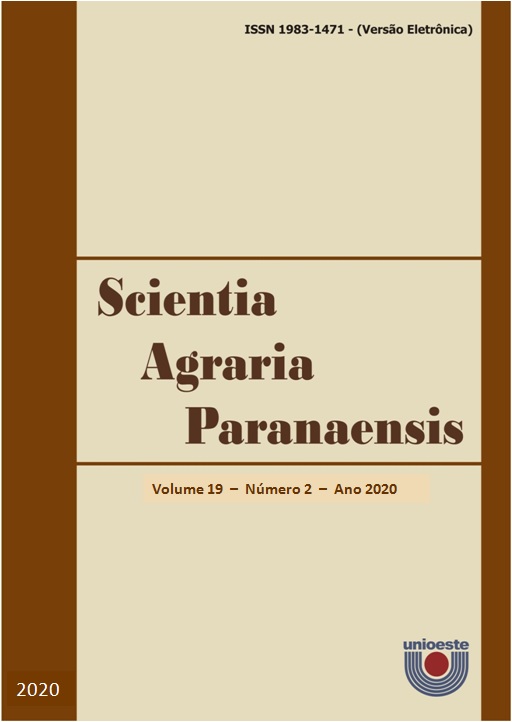Spent mushroom substrate Agaricus bisporus in the production of pepper seedlings
DOI:
https://doi.org/10.18188/sap.v19i2.23812
Agências de fomento
FAPEMIG (Fundação de Amparo à Pesquisa de Estado de Minas Gerais), CAPES (Coordenação de Aperfeiçoamento de Pessoal de Nível Superior) and the CNPq (Conselho Nacional de Desenvolvimento Científico e Tecnológico)
Resumo
Mushroom cultivation generates a large volume of SMS (spent mushroom substrate), which needs to be properly discarded to avoid contamination of new production cycles. However, SMS is a rich substrate, and can be used to produce vegetable seedlings. The present study evaluated the feasibility of using SMS of Agaricus bisporus as substrate for production of sweet pepper seedlings. The culture substrate was composed of sugar cane bagasse, horse manure, rice straw, soybean meal, chicken bed, urea, potassium chloride, simple superphosphate and gypsum. After cultivation, the SMS was homogenized, wet and composted. The substrate thus processed is the SMS of A. bisporus. The substrate Carolina II® was used as control. The following treatments were evaluated: T1- 100% Carolina II; T2 - 25% SMS + 75% Carolina II; T3-50% SMS + 50% Carolina II; T4- 75% SMS + 25% Carolina II and T5- 100% SMS). Seedling and germination characteristics were evaluated. The best germination parameters were observed with the treatment containing 50% of SMS, compared to the commercial substrate. However, for the quality parameters of the seedlings, the best results were obtained with 100% SMS treatment. Therefore, the use of different SMS percentages for the production of pepper seedlings is an alternative to reduce the production cost. The treatment with 100% SMS presented the best DQI values, as it produced vigorous and better quality pepper seedlings.Downloads
Publicado
16-07-2020
Como Citar
ABREU, C. G. de; COSTA, L. M. A. S.; COLLELA, C. F.; CASTRO, C. P.; ZIED, D. C.; DIAS, E. S. Spent mushroom substrate Agaricus bisporus in the production of pepper seedlings. Scientia Agraria Paranaensis, [S. l.], v. 19, n. 2, p. 161–167, 2020. DOI: 10.18188/sap.v19i2.23812. Disponível em: https://saber.unioeste.br/index.php/scientiaagraria/article/view/23812. Acesso em: 8 dez. 2025.
Edição
Seção
Artigos Científicos
Licença
Aviso de Direito Autoral Creative Commons
Política para Periódicos de Acesso Livre
Autores que publicam nesta revista concordam com os seguintes termos:
1. Autores mantém os direitos autorais e concedem à revista o direito de primeira publicação, com o trabalho simultaneamente licenciado sob a Licença Creative Commons Attribution que permite o compartilhamento do trabalho com reconhecimento da autoria e publicação inicial nesta revista.2. Autores têm autorização para assumir contratos adicionais separadamente, para distribuição não-exclusiva da versão do trabalho publicada nesta revista (ex.: publicar em repositório institucional ou como capítulo de livro), com reconhecimento de autoria e publicação inicial nesta revista.
3. Autores têm permissão e são estimulados a publicar e distribuir seu trabalho online (ex.: em repositórios institucionais ou na sua página pessoal) a qualquer ponto antes ou durante o processo editorial, já que isso pode gerar alterações produtivas, bem como aumentar o impacto e a citação do trabalho publicado (Veja O Efeito do Acesso Livre).
Licença Creative Commons
Esta obra está licenciada com uma Licença Creative Commons Atribuição-NãoComercial-CompartilhaIgual 4.0 Internacional, o que permite compartilhar, copiar, distribuir, exibir, reproduzir, a totalidade ou partes desde que não tenha objetivo comercial e sejam citados os autores e a fonte.


